It was a short walk to the arch. When we arrived, it was covered with people. But suddenly almost all of them left, leaving the arch virtually ours. We climbed up, got some nice shots, and by the time we climbed down, the next wave of people was arriving.


Click for larger image


Yay... the cactus flowers are back!
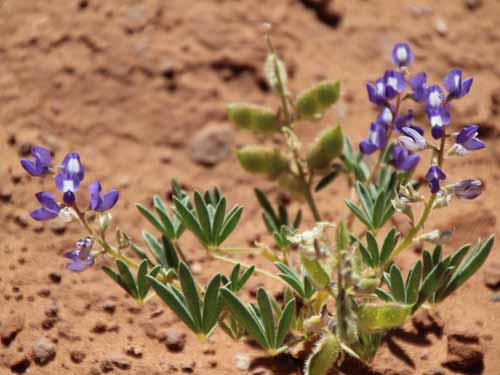
... along with some Skullcap.

Tiny tracks crisscrossed the sand. These are probably lizard tracks.
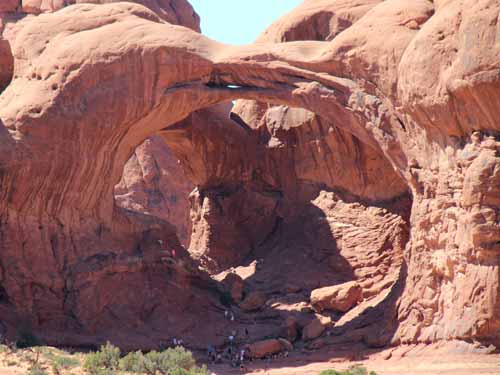
The arch... packed with people

Climbing up.
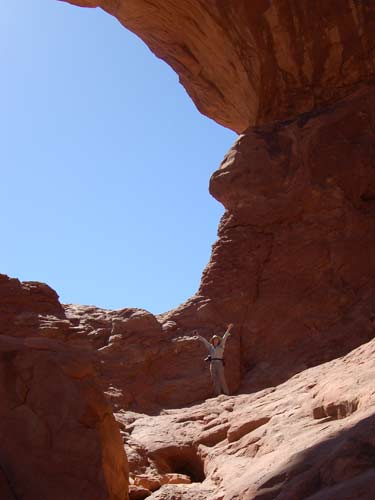
Mine, all mine!!

Looking up...

... and out.

A view of the Windows rock cluster
By the time we were done with all the short walks, it was close to 5 pm... a perfect time to start the longer hike to Delicate Arch. With no shade anywhere, it was QUITE a warm trek across the hot, flat rocks.
Our first stop on the way was the old Wolfe Ranch. John Wesley Wolfe settled here from Ohio around 1898 with his oldest son, Fred. He had received a leg injury during the Civil War and was looking for a drier climate. He chose this area, 100 acres along Salt Wash, for its water and grassland... enough for a few cattle. They built a one-room cabin and lived in this isolated area for over a decade.
In 1906, John's daughter moved out with her husband and children. She insisted he build the sturdier cabin that stands here today. They remained here a few more years, then all moved back to Ohio in 1910. John died in 1913 at the ripe old age of 84.

The cabin, outside...
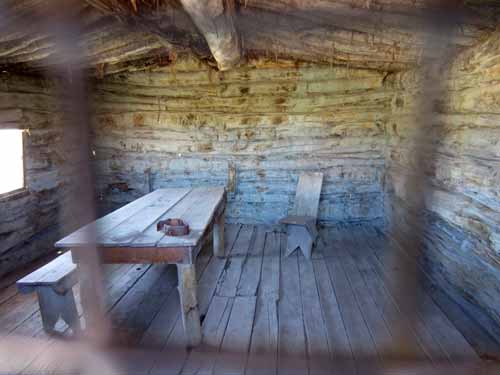
... and inside.

Hmmm... does a corral count as a wood picture?

John's grandkids living at the ranch in 1907
Next stop... petroglyphs. Carved between 1640 and 1850, these drawings were done by the Ute people living in the area. Utah owes its name to the Ute, who moved into this area around 1300.

Petroglyphs, not pictographs
Petroglyphs are often found on rocks with desert varnish (the dark coating that builds up on rocks exposed to the desert elements for a long time). Scraping off the varnish with a sharp stone reveals the original lighter rock color underneath.
Pictographs are usually on the lighter-colored sandstone. The paints are made from various plant parts and possibly animal fat. They could be applied with fingers, hair or plant fiber brushes. Hollow bird bones could also be filled with the paint.

Bighorn sheep

A man on horseback. The Utes' acquisition of horses by the mid-1600's drastically changed the way they lived, hunted, worked and traveled.
We then began the long, slow, hot hike up what felt like an endless piece of slickrock. We were guided by cairns and other people on the trail.

This the the path up.... these tiny dots are people.

Looking up the rock at what we still have to climb...

... and back down from where we came.

Spectacular views of the surrounding valleys

The Black-throated Sparrow is also known as the Desert Sparrow... for obvious reasons. They can survive long periods of time without water, obtaining moisture from the seeds and insects they eat.
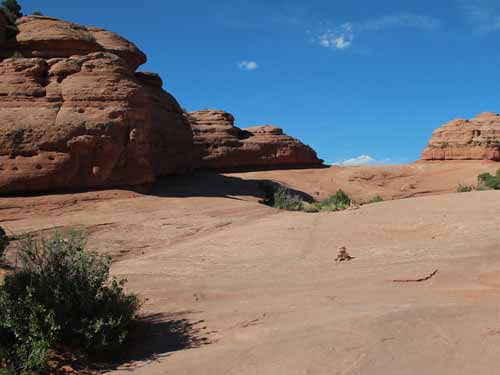
Once we reached the top, we still had a ways to go, winding among the incredible formations.


Sculpted rock



It's just around the corner! I promise!

We turned the corner and...

